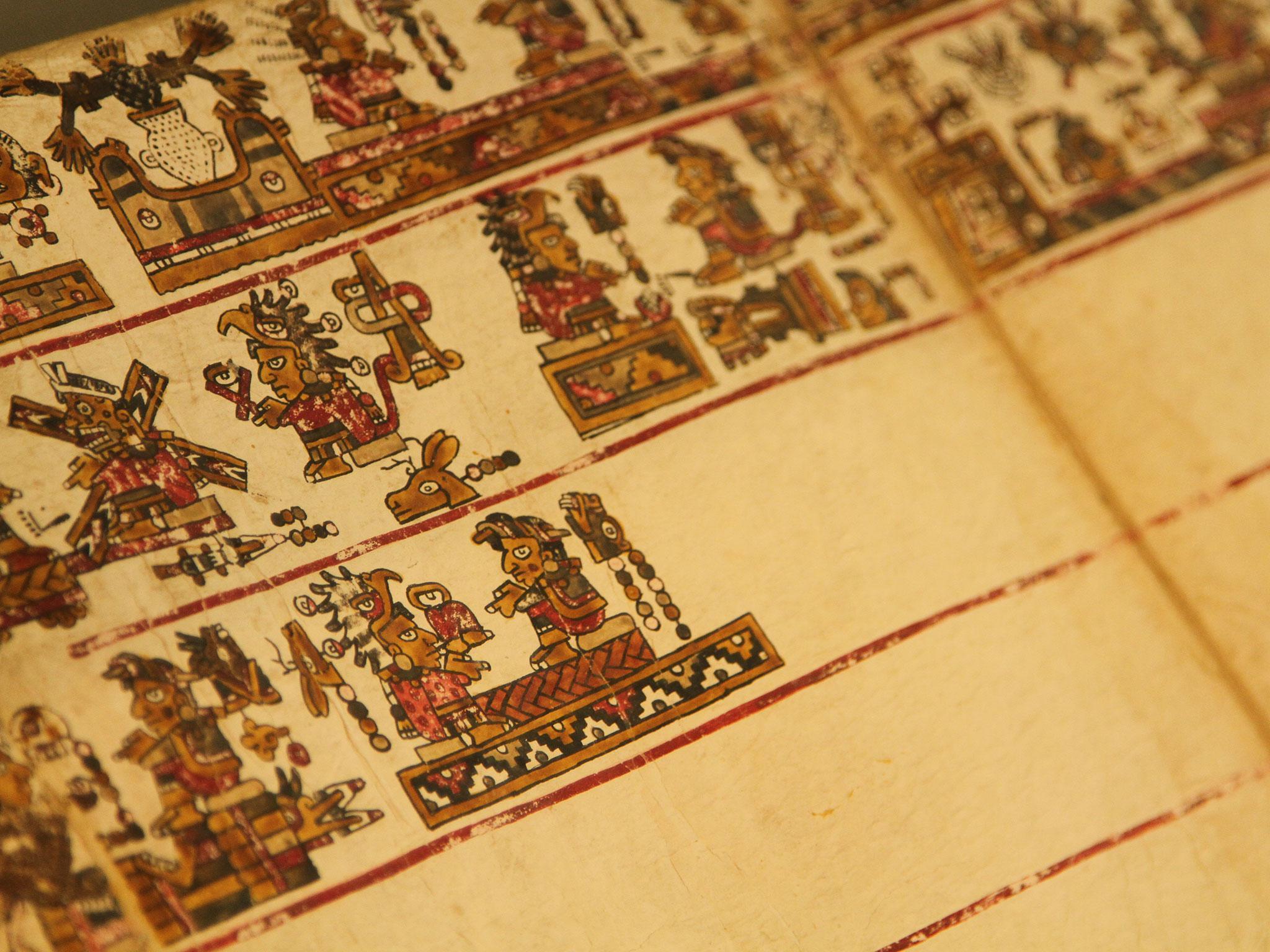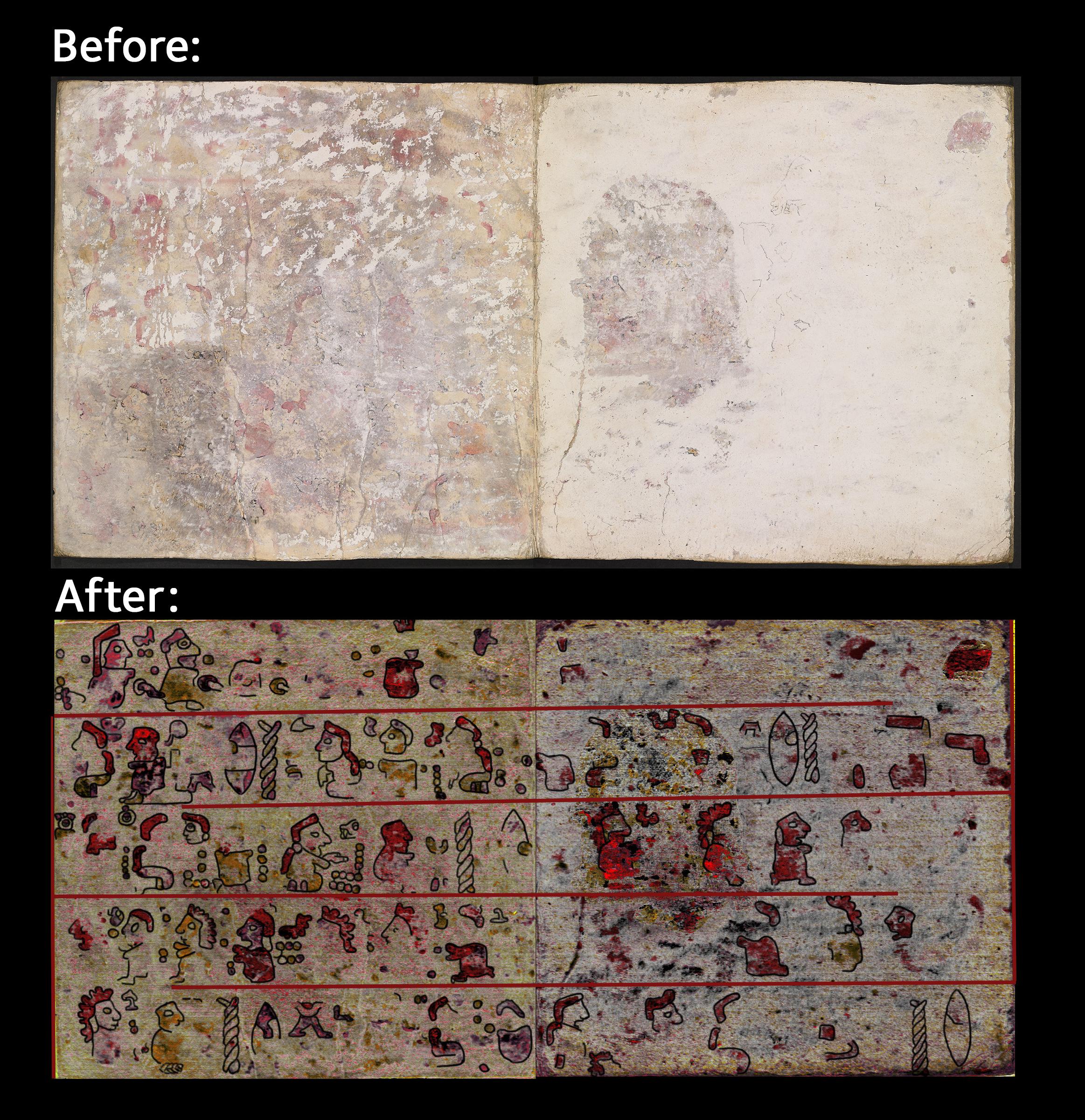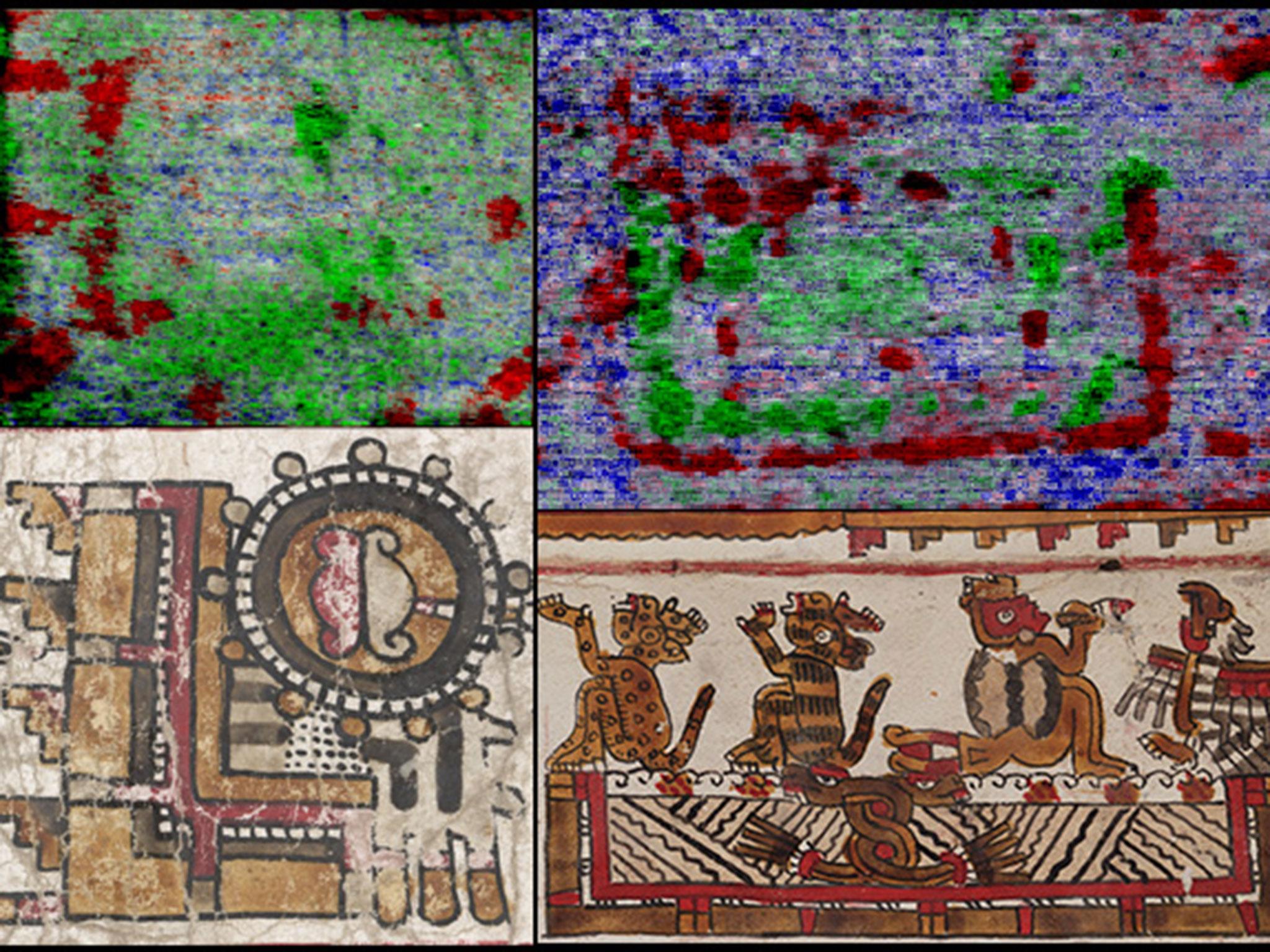Hidden images found beneath 500-year-old manuscript reveal glimpse of pre-colonial Mexico
Find could be one of last remants of vanquished civilisation

A series of hidden images have been discovered beneath a 500-year-old Mexican manuscript, offering a fascinating glimpse at the country before its colonisation by Spain.
The Codex Selden, from the pre-colonial Mixtec town of Anute, is one of just five surviving codices from the area, now Oaxaca state in the south of the country.
It was long suspected the Codex Selden, housed at Oxford University's Bodleian Libraries, was hiding another document beneath its superficial layer of plaster and chalk.

But using cutting-edge 'hyperspectral' imaging equipment, researchers have been able to view the older pictures for the first time.
Ludo Snijders from Leiden University took part in the research.
“There was quite a scream when I saw the images," he told The Independent.
"After four or five years of trying different techniques, we’ve been able to reveal an abundance of images without damaging this extremely vulnerable item."
The find is significant because the figures that feature in the layer beneath have been drawn in a pre-colonial style, while the text on top is “very much” written in a post-colonial style and heavily features European influences, according to Mr Snijders.

While the Codex Selden was thought to have dated from 1560, nearly 50 years after the Spanish completed their conquest of Mexico, the hidden images could date from several decades earlier.
However, it is difficult to make out what the text says, as the black outlines - which would have been applied using some type of carbon, such as charcoal - needed to fully distinguish a symbol have disappeared. Other figures are damaged.
“With this [scanning] technique, we are able to get the red and yellow colours out, but we still only have a partial image of what’s underneath there,” said Mr Snijders.
But the scans do appear to feature one character, mentioned at least 10 times, in the form of two symbols: flint, representing a knife, and a twisted cord. Flint-Cord is believed to have been a person of high importance in Mixtec society, such as a priest or king, and the same name has appeared in other codices, though it is unknown if these refer to the same person.
“Codices often focus on the dynasty of a specific place,” said Mr Snijders. “These documents can give us the history of a town following the image of a ruler.”
He said this meant much more could be learned from codices compared to just archaeology alone. By expressing alliances, wars and rituals, he said they could even outline the geopolitics of an ancient Mixtec society.
Other images revealed show around 20 figures sitting or standing in the same direction, while others depicted people holding sticks and spears and women with red hair.
The researchers are still working on the reconstruction of the hidden pages, of which there are known to be at least seven and very possibly more.
The reason the pages were hidden remains unknown, but it is thought they could have been an expression of anti-colonial sentiment against the brutal Spanish occupation.
Many of these texts were destroyed by colonisers, which is why so few exist. It could also have simply have been a form of Mixtec recycling, whereby an old deer hide was reused for lack of a new one.
David Howell, Head of Heritage Science at Bodleian Libraries, Oxford, operated the machinery which made the find, which he called his “most spectacular”.
He told The Independent the Codex Selden had always intrigued researchers because of a “destructive and aggressive” procedure done in the 1950s, which revealed hints of new text underneath.
Other imaging methods, such as X-rays, have not worked because of the organic paint used.
“Its special because of its uniqueness,” Mr Howell said. “It is the last remains of a whole culture”.
Join our commenting forum
Join thought-provoking conversations, follow other Independent readers and see their replies
Comments
Bookmark popover
Removed from bookmarks